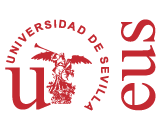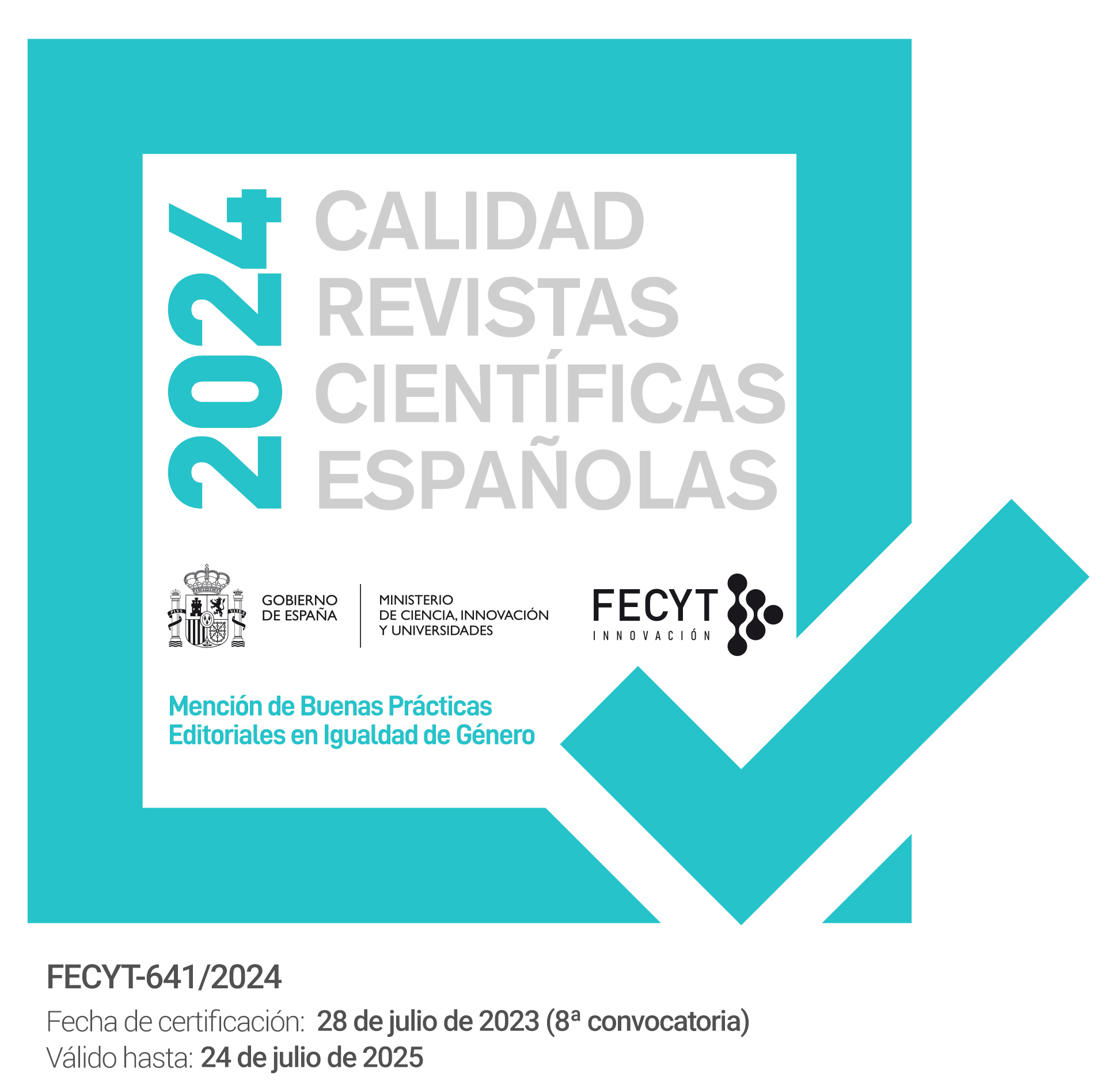“Diskusion entre Charlo i Yuse”, the events of six weeks in Thessaloniki (1920-1921) in rhymed prose with humor. Commentary, edition and notes
DOI:
https://doi.org/10.12795/PH.2018.v32.i01.06Keywords:
Judeo-Spanish, humor, Sephardic press, Sephardic history, ThessalonikiAbstract
The beginning of the 20s of the last century was marked by major changes in Thessaloniki: some of them caused by its integration in the Kingdom of Greece and the consequent Hellenization of the city; others, as a consequence of nationalism, political struggles, wars and disasters. The Jews -who still had the numerical majority in terms of population and maintained the status quo and communal structures of the long Ottoman period- were deeply affected by the new situation, which forced them to redefine their role and identity. Sephardic press echoed punctually of all events and reflections by members of the community in the most varied forms of expression and varieties of local Judeo-Spanish.
After describing the situation of Thessaloniki in those days and, especially, of the Jews and of Judeo-Spanish, we publish the edition of the humorous series Diskusion entre Chalo i Yuse in the Judeo-Spanish authorized system of writing and transcription. The author of the series, through his characters, two journalists, reviews the most outstanding events occurred in Thessaloniki in the six weeks of its publication, in the Judeo-Spanish variety spoken by the culturally westernized Sephardic middle class.
Downloads
References
Álvarez López, Cristóbal José (2017): Estudio lingüístico del judeoespañol en la revista “Aki Yerushalayim”. Tesis doctoral. Sevilla, Universidad de Sevilla: Departamento de Lengua Española, Lingüística y Teoría de la Literatura.
Ayoun, Richard (2004): “La diffusion du français à Salonique par l’Alliance Israélite Universelle de sa création à la fin du xixe siècle”, Judenspanisch 9 (= Neue Romania 31), 55-72.
Bádenas de la Peña, Pedro (2003): “Los judíos de Grecia: Luces y sombras de una relación intercomunal”, en Romero Castelló, Elena (coord.), Judaísmo hispano. Estudios en Memoria de José Luis Lacave Riaño. Vol. 2. Madrid: Consejo Superior de Investigaciones Científicas, CSIC, 827-847.
Borovaya, Olga (2012): Modern Ladino Culture. Press, Belles Lettres, and Theater in the Late Ottoman Empire. Bloomington, Indiana: Indiana University Press.
Bunis, David M. (1999): Voices from Jewish Salonika. Selection from the Judezmo Satirical Series Tio Ezrá I Su Mujer Benuta and Tio Bohor I Su Mujer Djamila. Jerusalem, Thessaloniki: Misgav Yerushalayim, ANL, The Ets Ahaim Foundation of Thessaloniki.
Busse, Winfried (2001): “Sistemas de eskritura del ladino i normalizasion de su ortografia”, Aki Yerushalayim. Revista Kulturala Djudeo-Espanyola 67, 19-22.
Busse, Winfried (2005): “Rashí. Transliteración, transcripción y adaptación de textos aljamiados”, Judenspanisch 9 (= Neue Romania 34), 97-107.
Correa Calderón, Evaristo (1965): “Jud.–Esp. i ʻtambiénʼ”, Revista de Filología Española 46, 1-2, 149-161.
Crews, Cynthia (1955): “Notes on Judaeo-Spanish II”. Proceedings of the Leeds Philosophical and Literary Society 7, 4. Leeds: Chorley & Pickersgill, 217-230.
Crews, Cynthia/Vinay, J[ean] P[aul] (1939), «Quelques observations supplémentaires sur le parler judéo-espagnol de Salonique», Bulletin Hispanique 41 (reimpr. Ámsterdam 1970), 209-235.
Czöndör, Klára (2008): “La escritura de la lengua judeo-española”, Verbum Analecta Neolatina 10, 1, 79-97.
Gaon, Moshe David (1965): A Bibliography of the Judeo-Spanish (Ladino) Press [orig. en hebreo]. Jerusalem: Ben Zvi Institute y National and University Library.
García Barrientos, José Luis (1998): Las figuras retóricas. El lenguaje literario 2. Madrid: Arco Libros.
Koen-Sarano, Matilda (1991): Djoha ke dize? Kuentos populares djudeo-espanyoles. Yerushalayim: Kana.
Koen-Sarano, Matilda (2008): Riyir kon Djoha i los otros. Paris: AIU y La Lettre Sépharade.
Lagos, Katerina (2015): “Forced Assimilation or Emigration: Sephardic Jewry in Thessaloniki, 1917-1941”, The Journal of Modern Hellenism 31, 59-87.
Lida de Malkiel, María Rosa (2001): “Rasgos comunes a los caracteres de La Celestina”, en: López-Ríos, Santiago (ed.): Estudios sobre la Celestina. Madrid: Ediciones Istmo, 169-209.
Maimon, Sam (1908): “Ladino – English Dictionary”, en: Angel, Marc D. (ed.): Studies in Sephardic Culture. The David N. Barocas Memorial Volume. New York: Sepher Hermon Pr, 109-178.
Mayoral, José Antonio (2005): Figuras retóricas. Madrid: Síntesis.
Meadows, F. C. (1873): New Italian and English dictionary, in two parts: I. Italian & English – II. English & Italian. London: W. Tegg.
Michalopoulos, Georgios D. (2015): “The Judeo-Bolshevik conspiracy and the persecution of Jews in interwar Salonica”, Studia Krytyczne/Critical Studies 1, 1, 48-63. <http://cejsh.icm.edu.pl/cejsh/element/bwmeta1.element.desklight-ffe3d8b5-1183-4fc4-8045-944de8ce355c> (1 octubre 2018).
Minervini, Laura (2014): “El léxico de origen italiano en el judeoespañol de Oriente”, en: Busse, Winfried (ed.): La lengua de los sefardíes. Tres contribuciones a su historia. Tübingen: Stauffenburg Verlag, 65-104.
Molho, Michael (1960): Literatura sefardita de Oriente. Madrid: CSIC.
Molho, Michael (1967): “El periodismo judeoespañol en Salónica” [orig. en hebreo], en: Salonique, Ville-Mère en Israël. Jérusalem, Tel Aviv: Centre de Recherches du Judaïsme de Salonique, 103-107.
Molho, Rena (1993): “Education in the Jewish Community of Thessaloniki in the beginning of the Twentieth Century”, Balkan Studies 34, 2, 259-269.
Molho, Rena (2004): “La destrucción de los judíos de Salónica”, Nuestra Memoria 10, 23, 31-36.
Molho, Rena (2005): “Jewish Working-Class Neighborhoods established in Salonica Following the 1890 and the 1917 Fires”, en: Salonica and Istanbul: Social, Political and Cultural Aspects of Jewish Life (Analecta Isisiana: Ottoman and Turkish Studies 83). Istanbul: The Isis Press, 107-126.
Morcillo Rosillo, Matilde (1999), “España y los sefardíes de Salónica durante el incendio de 1917”, Sefarad 59, 2, 353-369.
Naar, Devin E. (2016): Jewish Salonica. Between the Ottoman Empire and Modern Greece. Stanford: Stanford University Press.
Peramos Soler, Natividad (2009/10): El judeo-español en Salónica. Influencias lingüísticas. Santa Cruz de Tenerife, Universidad de La Laguna: Humanidades y Ciencias Sociales/14. Recuperada de Repositorio institucional ULL <http://riull.ull.es/xmlui/handle/915/9791> (20 septiembre 2018).
Quintana, Aldina (2006): Geografía lingüística del judeoespañol. Estudio sincrónico y diacrónico. Bern et al.: Peter Lang.
Quintana, Aldina (2010): “El judeoespañol, una lengua pluricéntrica al margen del español”, en: Paloma Díaz-Mas, Paloma/Sánchez Pérez, María (eds.): Los sefardíes ante los retos del mundo contemporáneo. Identidad y mentalidades. Madrid: CSIC, 33-54.
Romero, Elena (1988): Coplas sefardíes. Primera selección. Córdoba: Ediciones El Almendro.
Romero, Elena (1992): La creación literaria en lengua sefardí. Madrid: Mapfre.
Romero, Elena (2008): Entre dos (o más) fuegos. Fuentes poéticas para la historia de los sefardíes balcánicos. Madrid: Consejo Superior de Investigaciones Científicas.
Symeonidis, Haralambos (2002): Das Judenspanische von Thessaloniki. Beschreibung des Sephardischen im grieshischen Umfeld. Bern/Berlin/et al.: Peter Lang.
Vassilikou, Maria (1999): Politics of the Jewish Community of Salonika in the Inter-war Years: Party Ideologies and Party Competition. Tesis doctoral. London: University College London, Department of History. Recuperada de Thesis digitised by British Library EThOS (URI <http://discovery.ucl.ac.uk/id/eprint/1318012> (28 julio 2018)
Fuentes Documentales
El Puevlo (1920): “La kestion del gran rabino” (4 diciembre).
El Puevlo (1920): “Nominasion de konsejeros munisipales” (12 diciembre).
El Pueblo (1920): “En Saloniko” (25 diciembre).
El Puevlo (1931): “Los djidios en las eskolas gregas” (19 julio).
Perez, Alexandre (1920): “Djemiet non kieremos”. El Chaketon 26 (29 kislev 5681 [10 de diciembre de 1920]), pág. 1.
Perez, Alexandre (1920): “Kieremos un gran rabino”. El Chaketon 27 (6 tevet 5681 [17 de diciembre de 1920]), pág. 1.
Perez, Alexandre (1920): “Las eleksiones munisipalas”. El Chaketon 28 (13 tevet 5681 [24 de diciembre de 1920]), pág. 3.
Perez, Alexandre (1920): “Ke kiere la Makiedonia?”. El Chaketon 29 (18 tevet 5681 [29 de diciembre de 1920]), pág. 1.
Perez, Alexandre (1921): “El sufraje universal”. El Chaketon 30 (25 tevet 5681 [5 de enero de 1921]), pág. 1.
Perez, Alexandre (1921): “Gounaris en Saloniko”. El Chaketon 31 (5 shevat 5681 [14 de enero de 1921]), pág. 1.
Fuentes Lexicográficas
Boerio, Giuseppe (1867): Dizionario del dialetto veneziano. Venezia: Reale Tipografia di Giovanni Cecchini Edit.
Nehama, Joseph (1977): Dictionnaire du Judéo-espagnol. Madrid: Consejo Superior de Investigaciones Científicas.
Perez, Avner: Trezoro de la lengua djudeoespanyola (ladino) durante todas las épocas [en línea]. Diksionario amplio istoriko. <http://folkmasa.org/milon/yachad2.php> (20 septiembre 2018).
sesliSölük. Online English Turkish and Multilingual Dictionary [en línea] <https://www.seslisozluk.net/en/> (15-20 septiembre 2018).
Corpus digitalizados
[CORDE]: Real Academia Española. Banco de datos (corde) [en línea]: Corpus Diacrónico del Español. <http://www.rae.es> (15 septiembre 2018).
Published
How to Cite
Issue
Section
License
The printed and electronic editions of this Journal are edited by the University of Seville Editorial, and the source must be cited in any partial or total reproduction.
Unless otherwise indicated, all the contents of the electronic edition are distributed under a license of use and distribution “Attribution-NonCommercial-NoDerivatives 4.0 International” . You can view the informative version and the legal text of the license here. This fact must be expressly stated in this way when necessary.
Authors who publish in this journal accept the following conditions:
- The author/s retain copyright and grant the journal the first publication right, and accept it to be distributed with the Creative Commons By NC ND 4.0 licence, which allows third parties to use what is published whenever they mention the authorship of the work and the first publication in this journal and whenever they do not make commercial use and reuse it in the same way.
- Authors can make other independent and additional contractual agreements for the non-exclusive distribution of the article published in this journal (e.g., include it in an institutional repository or publish it in a book) provided they clearly indicate that the work was published for the first time in this journal.
Authors are allowed and recommended, once the article has been published in the journal Philologia Hispalensis (online version), to download the corresponding PDF and disseminate it online (ResearchGate, Academia.edu, etc.) as it may lead to productive scientific exchanges and to a greater and faster dissemination of published work (see The Effect of Open Access).
Accepted 2019-01-14
Published 2018-08-22
- Abstract 325
- PDF (Español (España)) 99
- EPUB (Español (España)) 46
- HTML (Español (España)) 136







